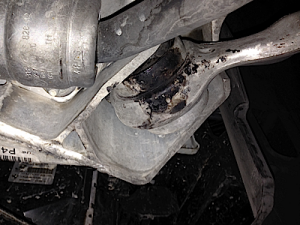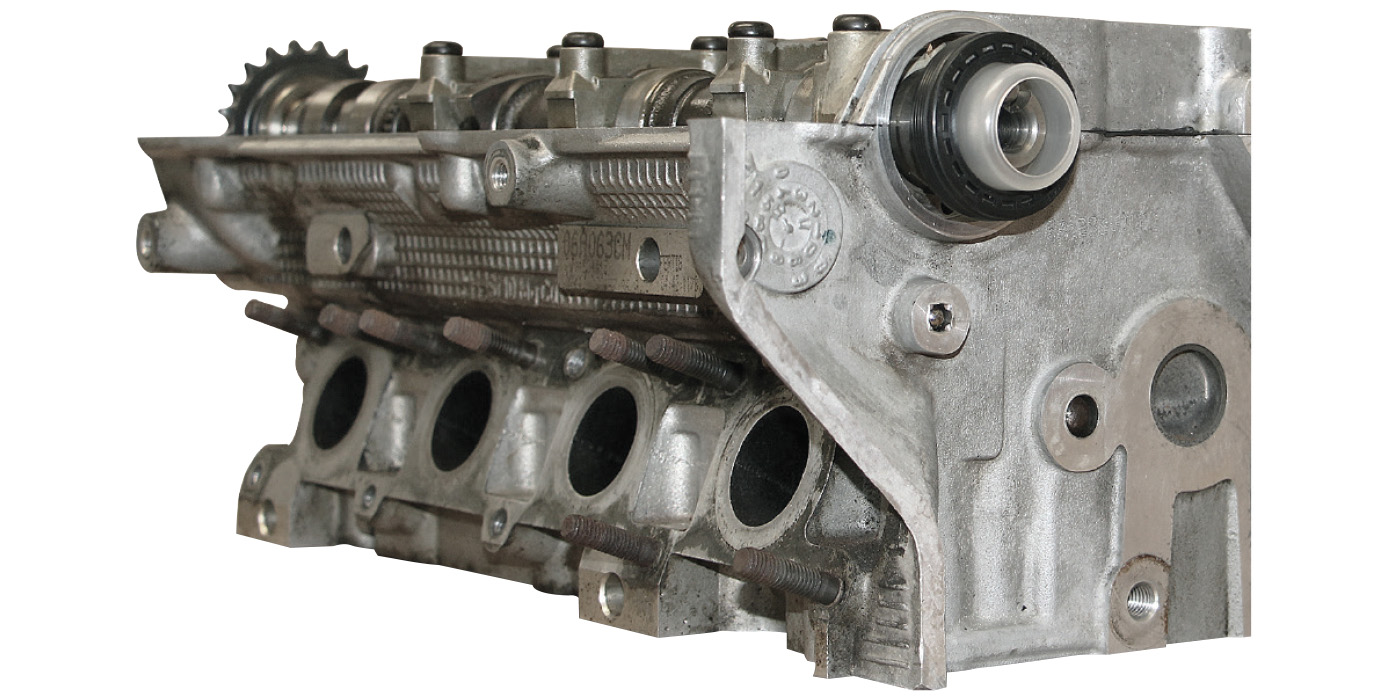It’s not uncommon for an older BMW with a bad rubber control arm bushing to experience a few inches of front wheel movement, just as the vehicle comes to a stop with a pretty firm clunk.
The latest advancement in bushing design is hydraulic or oil-filled control arm bushings. Why such a change in a simple component, you ask? It’s in response to the consumers’ desire for smoother, quieter and better-handling cars. That means more sophisticated suspension components. (Full disclosure: the parts perform the same function but have new names, like wishbone, tension strut and torque strut.) The “control arm bushing” is actually called a hydro bearing in the BMW catalog (because of its hydraulic damping mechanism).
It turns out these bushings are “tuned” to the suspension of the vehicle. They are designed with a certain tire and wheel combination, and are designed to isolate wheel body frequencies and vibrations from the vehicle.
This may explain why we see cars with custom (large) wheels and tires in need of suspension work more often.
REPLACEMENT TIPS
Here are a few tips when dealing with original equipment hydraulic bushings.
- Look for leaking fluid. These bushings will leak out fluid and should be replaced when they do (See photo 2).
- There are no sensors yet, so a visual inspection during each service visit should be performed. Remember, any worn suspension component can affect braking and handling. And, tire wear may increase due to worn suspension components.
- Always make sure you’re using the right tools and procedures when replacing the bushings; using the wrong tools can damage the control arm. Some bushing tools are designed for steel control arms only. Some press work is needed here — a damaged arm must be replaced, and by damaged, I mean one with nicks and bumps.
- Never use aftermarket “upgraded” rubber-only components. These are often marketed as an upgrade replacement. But, keep in mind that it’s not an upgrade when the car is designed for a hydraulic replacement.
- Since the wheels are already off, it’s a good opportunity to balance them, and remember to always perform a complete alignment — front and rear.
Following these tips and best-practice procedures will ensure not only a quality job, but also a very satisfied customer.















